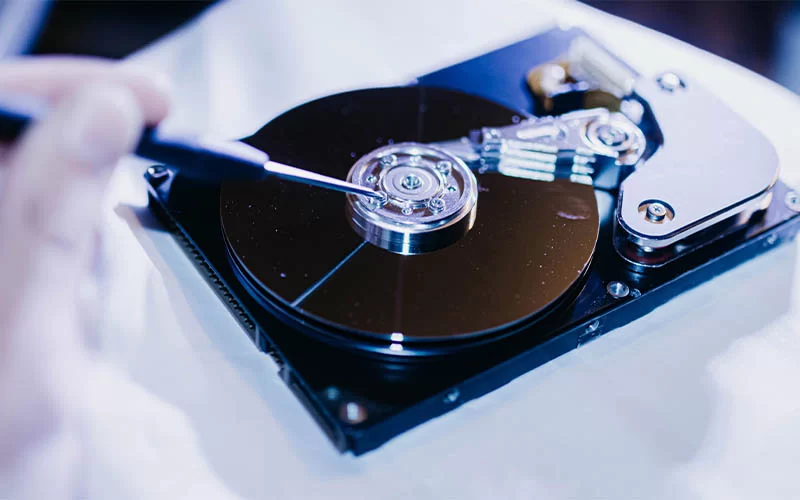Introduction
No individual can afford data loss, especially for any reason such as malfunctioning or damaging an Android mobile, accidental deletion by the users themselves, or malware attacks. Fortunately, data recovery services help companies and individuals recover critical information by ensuring that they can retrieve lost or inaccessible files stored on a wide range of storage devices. But how do all these services work? In this article, we dive deep into data recovery, exposing how professionals recover data and their processes, techniques, technologies, etc.
What is Data Recovery?
Data recovery refers to retrieving lost, corrupted, or deleted information from storage media such as hard drives, SSDs, USB sticks, flashcards, etc. It should be noted that the difficulty of most data recovery is mainly contingent on how it occurred (the cause) or what was involved in hardware terms and, to some extent, viewed economically.
Common Causes of Data Loss
Before diving into the specifics of data recovery, it’s essential to understand the common scenarios that lead to data loss:
- Hardware Failure: Mechanical failures in hard drives, such as a damaged read/write head or spindle motor, can make data inaccessible.
- Accidental Deletion: Files mistakenly deleted or formatted can often be recovered, as the data is not immediately erased from the disk.
- Software Corruption: Corrupted file systems or software issues can make data unreadable, even though it still exists on the storage device.
- Malware or Viruses: Malicious software can corrupt or delete data, rendering it inaccessible.
- Physical Damage: Devices that have been physically damaged—due to drops, water exposure, or other incidents—can suffer from data loss, requiring specialized recovery techniques.
- Natural Disasters: Events such as fires, floods, or earthquakes can destroy storage devices, making data recovery challenging.
The Data Recovery Process
Data recovery is typically carried out by specialized professionals using advanced tools and techniques. The process can be broken down into several key steps:
1. Initial Assessment and Diagnosis
The initial step of any data recovery that involves device repair is to evaluate your damaged storage media. Techs will inspect the device to find out what caused the data loss and assess how bad it is. This assessment can be a physical inspection or a software-based diagnostic. Based on these findings, recovery engineers can then decide the next best steps.
2. Device Stabilisation
If the problem is that a storage device has been physically damaged – such as in an incident like a head crash of a hard disk or a broken circuit board, etc.- first, we must stop the disk from further damage. That might mean fixing or replacing broken parts in a lab-esque situation. An example is hard drives that are opened in clean rooms to prevent dust or other contaminants from stealing through.
3. Imaging the Drive
After stabilizing the device, a bit-by-bit clone of the entire storage device is often created next. This process is called Imaging, and the recovery should be done on a copy of data and not on the original device. Discuss the best way to send your storage device; this minimizes further data loss and allows technicians to try different solutions if necessary.
4. Logical Recovery
The next phase, the logical recovery process, starts after imaging the drive. We investigate the file system and data structure where the fragmented or lost files are located. We reconstruct these types of files through dedicated software tools in an effort to make them readable again. If the file system is damaged, technicians must reassemble the data by hand.
5. Physical Recovery
Advanced methods are required when the storage device is physically damaged to a greater extent. If, for example, a hard drive’s read/write heads are defective, they have to be replaced by compatible parts in a clean room facility. If the platters on a hard drive get scratched or degraded, specialized equipment can also help read the remaining data.
6. Data Reconstruction and Extraction
After retrieving data, reconstruction is often required for it to be used again; this could mean fixing damaged files, rebuilding file structures, or reconstructing previously fragmented data. The restored information is subsequently exported and backed up to a new storage system, such as an external hard disk or pen drive.
7. Verification and Quality Control
Next, the data was recovered and reconstructed from storage before being subjected to strict validation criteria, ensuring its quality for future use. Technicians reviewed the recovered files for completeness and accuracy to return the data to its original state as close as possible.
8. Data Return and Post-Recovery Support
At this point, the data is returned to the client after verification for integrity and content, typically on a new storage device. Sometimes, if you are transferring data, it will even be encrypted for better security. To assist in this area, many data recovery services also offer post-recovery support to clients regarding how to protect their data and avoid similar incidents.
Advanced Techniques in Data Recovery
In addition to the standard recovery process outlined above, data recovery professionals may use a variety of advanced techniques depending on the specific situation:
1. RAID Recovery: RAID (Redundant Array of Independent Disks) systems are used in many enterprise environments for data redundancy and performance. Recovering data from a failed RAID array requires specialized knowledge and tools to reconstruct the array and retrieve the data.
2. SSD Recovery: Solid-state drives (SSDs) operate differently from traditional hard drives, using flash memory rather than spinning platters. Data recovery from SSDs can be challenging due to how data is stored and managed, particularly with TRIM commands that automatically erase deleted data.
3. Firmware Repair: In some cases, data loss can be caused by corrupted or malfunctioning firmware on the storage device. Repairing or updating the firmware can restore access to the data.
4. Encrypted Data Recovery: Recovery can be more complex if the lost data is stored on an encrypted device. Technicians must work with the encryption protocols to decrypt the data without compromising its integrity.
How to Choose a Data Recovery Service
Choosing an exemplary data recovery service is crucial when faced with data loss. Here are some factors to consider:
1. Experience and Expertise: Look for a service provider with a proven track record and specialized expertise in the type of data recovery you need.
2. Clean Room Facilities: For physically damaged drives, ensure the provider has access to clean room facilities where delicate work can be carried out in a contamination-free environment.
3. Security and Confidentiality: Data recovery often involves sensitive information. Choose a provider that prioritizes data security and confidentiality and has strict protocols to protect your information.
4. Success Rate: Ask about the provider’s success rate for similar cases. While no service can guarantee 100% recovery, a high success rate indicates their capabilities.
5. Customer Support: A reputable data recovery service will offer excellent customer support, keeping you informed throughout the recovery process and providing assistance after the data has been returned.
6. Cost and Transparency: Data recovery can be expensive, depending on the case’s complexity. Choose a provider that offers transparent pricing and transparency about the potential costs involved.
Conclusion
Data recovery services have played an essential role in the disaster by providing individuals and corporations with precious assistance to bring back their hands when vital information is inaccessible. Professional data recovery specialists can often recover even the most severely lost information with modern technology, specific tools, and specialized techniques. Reading up on how data recovery works can give you an edge, help you make educated potential choices should data loss ever happen to your company and from which the right service provider can bring back all its valuable information.




